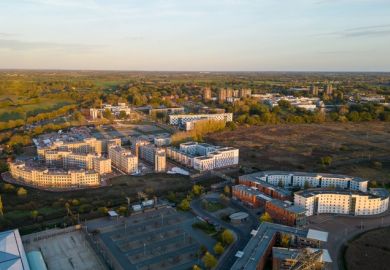An Australian university has been accused by a union of using the economic impact of the pandemic as “cover” to shift research-active staff into teaching-only roles.
Perth’s Murdoch University will require academics to spend almost all of their time teaching, in an intensification of a workload reallocation proposal announced last September.
The Academic Career Framework was designed to “simplify and improve the administration of probation and promotion”, according to Murdoch provost Romy Lawson. It prescribed publication benchmarks that academics must meet to maintain their research time allocations.
Staff complained that the benchmarks were so onerous that even star publishers risked losing research time.
In mid-April, vice-chancellor Eeva Leinonen indicated that Murdoch would push ahead with the proposal. She said staff would be allocated up to 80 per cent of their time for teaching “where appropriate”, with safeguards for those performing essential services or priority research.
Professor Leinonen framed the move as a coronavirus-related savings measure alongside freezes to recruitment and executive salaries and optional reductions of working hours. “This is the most significant financial challenge the university has ever faced,” she told staff. “I am respectfully seeking your help.”
In mid-May the National Tertiary Education Union (NTEU) lodged a dispute notification with the university, saying Murdoch had sidestepped its obligation to consult staff over “major changes to teaching workloads” and had given no assurances that the workload changes would be temporary.
“The [proposal] will have a detrimental effect on casual academic employees with widespread job losses, a reduction in overall staffing [and a] significant impact on research track records and career trajectories,” the letter says.
“Members feel [it] will not only be in response to the pandemic but part of a greater change…of a permanent ongoing nature. Is [it] quarantined to the Covid-19 pandemic only?”
Murdoch has told the union that the proposal does not meet the criteria for a major change. Teaching loads of up to 80 per cent are allowed under a 2018 enterprise agreement approved following an acrimonious period during 2016 and 2017.
The NTEU’s Western Australian Division secretary, Jonathan Hallett, said the union had requested “transparent information” about the new proposal’s impacts on casual employees and permanent staff’s teaching workloads. The university has not provided figures.
“While we all need to pull our weight in responding to this crisis, we’re deeply concerned that this could be an attempt to permanently reshape academic roles at Murdoch under the cover of a response to Covid-19,” Dr Hallett said.
“Is [Murdoch’s] ambition to become more teaching-focused or specialised in research in only a few areas? What does that mean to staff that have been working under a commitment to research in their disciplines?”
The dispute has emerged amid revelations that Murdoch has sufficient financial reserves to cover several years of coronavirus-related revenue shortfalls.
A study by the University of Melbourne’s Centre for the Study of Higher Education, based on 2018 data, found that Murdoch’s expenses as a proportion of its cash and investments were the second lowest of any university. The report deemed Murdoch “the most financially secure” of the universities earning comparatively little from foreign students’ fees.
Murdoch’s recently released 2019 institutional accounts suggest its financial position remains strong, with little change to its reserves. While its expenses increased by about A$26 million (£14 million) last year, its earnings rose A$35 million.
Times Higher Education asked Murdoch why it had found it financially necessary to rearrange teaching workloads. The university said it was “reviewing its capability to achieve its strategic goals in the timeframes established and agreed with its senate”.
“The university is and will carefully manage those decisions which affect students and staff to ensure we position our university for future success,” its statement says.
Murdoch also declined to answer questions about its executives’ remuneration. Unlike most Australian vice-chancellors, Professor Leinonen has not agreed to a pay cut this year to contribute to savings, through senior staff have foregone this year’s scheduled increases.
Professor Leinonen’s remuneration increased by about A$60,000 or 6 per cent to nearly A$1 million last year.
The number of “teaching only or mainly” staff at Murdoch rose from 39 per cent to 49 per cent of its academic workforce.
Some observers believe the economic crisis created by the pandemic will leave smaller Australian universities with little choice but to rationalise their research activities.
Register to continue
Why register?
- Registration is free and only takes a moment
- Once registered, you can read 3 articles a month
- Sign up for our newsletter
Subscribe
Or subscribe for unlimited access to:
- Unlimited access to news, views, insights & reviews
- Digital editions
- Digital access to THE’s university and college rankings analysis
Already registered or a current subscriber?








